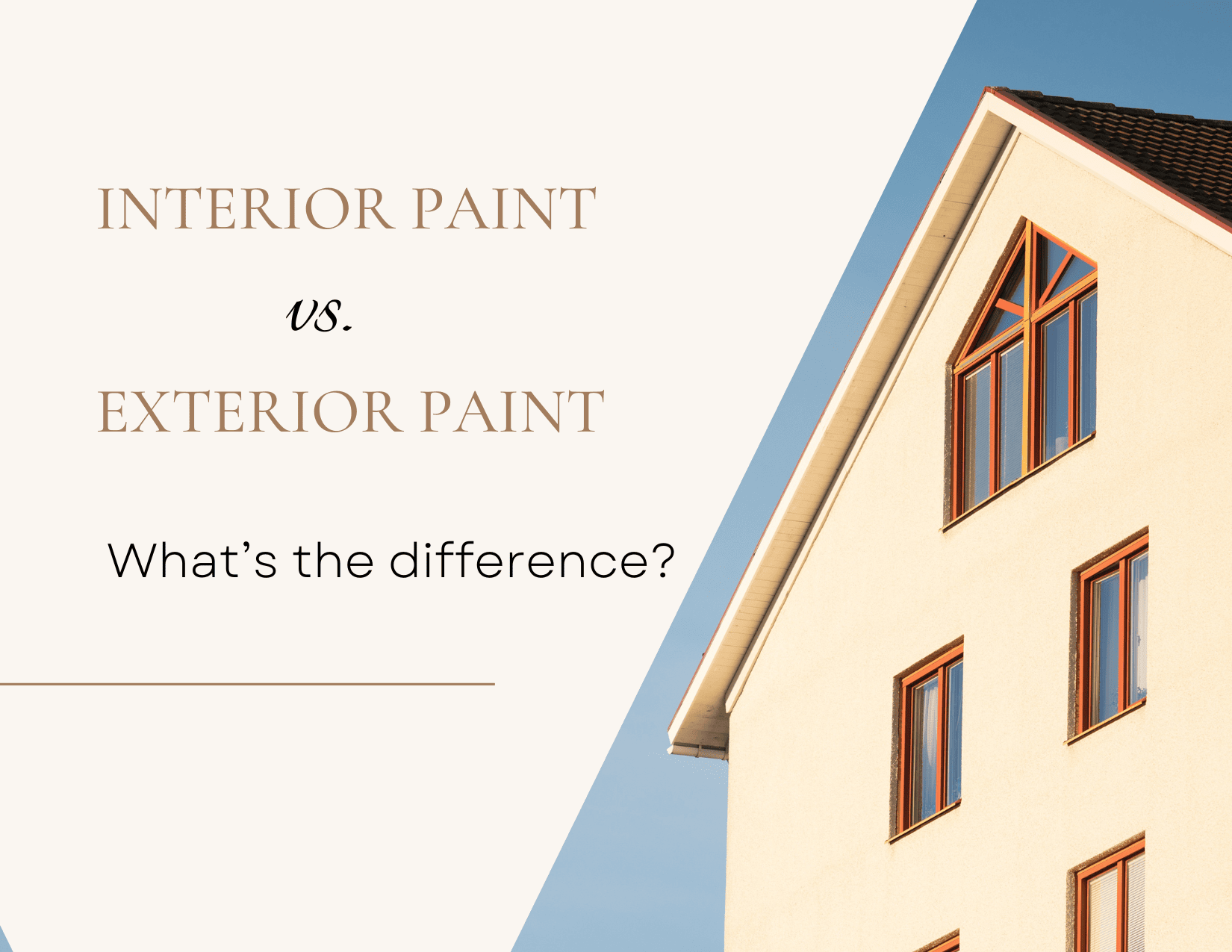
08 Jan Is there a Difference Between Interior and Exterior Paint?
Is there a Difference Between Interior and Exterior Paint?
Do you have some leftover interior paint and need to do some touch-up exterior painting? Before you grab that brush, you should know that exterior and interior paints are different. They are formulated differently, which means they’re not interchangeable. You can’t just substitute interior paint for exterior. Let’s take a closer look at those differences.
The Basic Ingredients of Paint
Paint is made up of four elements:
-
-
-
- Resin: It binds the pigments together and helps the paint dry.
- Pigments: They give paint its color.
- Additives: These can act as fillers and sometimes as anti-fungicidal agents.
- Solvents or water-based: These make the paint easier to apply, whether chemical-based (alcohol or acetone) or water-based.
-
-
The Differences Between Interior and Exterior Paint
The differences between the two paints come down to the ingredients used, particularly exterior paint.
Exterior paints must withstand weather, mildew/mold, and UV rays in ways that interior paints do not.
-
-
-
- Additives in exterior paint help it resist fading from UV rays, adhere to certain surfaces, and discourage mildew.
- Exterior paint is made with resins that allow it to withstand temperature fluctuation.
- Those combined additives and resins emit more VOCs (volatile organic compounds) than those found in interior paints.
- Exterior paint offers fewer finish options: flat, semi-gloss, or gloss enamel.
-
-
Interior paints have different qualities than exterior paints and differ from them in the following ways:
-
-
-
- The resins found in interior paint allow it to better withstand scratches or scuffs and make cleaning easier.
- Interior paints are less likely to contain fungicides.
- Interior paint emits lower VOCs than exterior paints.
- Unlike exterior paints, interior paints come in a wider variety of finishes, including matte, satin, eggshell, semi-gloss, and gloss.
-
-
Selecting the Right Type of Paint
The outlined differences mean you shouldn’t swap one type of paint for the other. Each paint type – exterior and interior – has formulations that are indicated for its use.
Interior paint is not formulated to withstand exterior conditions. Using it outdoors will mean needing to repaint more often. Its shorter lifespan can also expose the surface to weather conditions that increase the likelihood of surface deterioration.
Using exterior paint with high VOC emissions inside your home is not advisable and can pose certain health risks.
If you need to do exterior touch-ups, we suggest using paint formulated for exteriors. The same goes for indoors. Use only interior paints for touch-ups inside your home.

Mike Katounas is the owner of Home Works Painting, a painting business in Northern Virginia. He has over 15 years of experience in residential interior and exterior painting, drywall installation/repair, carpentry, wallpaper removal, power washing, commercial painting, color consultation, and staining/sealing. Their service areas include Chantilly, Fairfax, Herndon, Oakton, Reston. Mike takes pride in his work, and he always follows a strict code of conduct that includes the use of quality paint, a clean workspace, and an honest, respectful approach to his customers.












Sorry, the comment form is closed at this time.